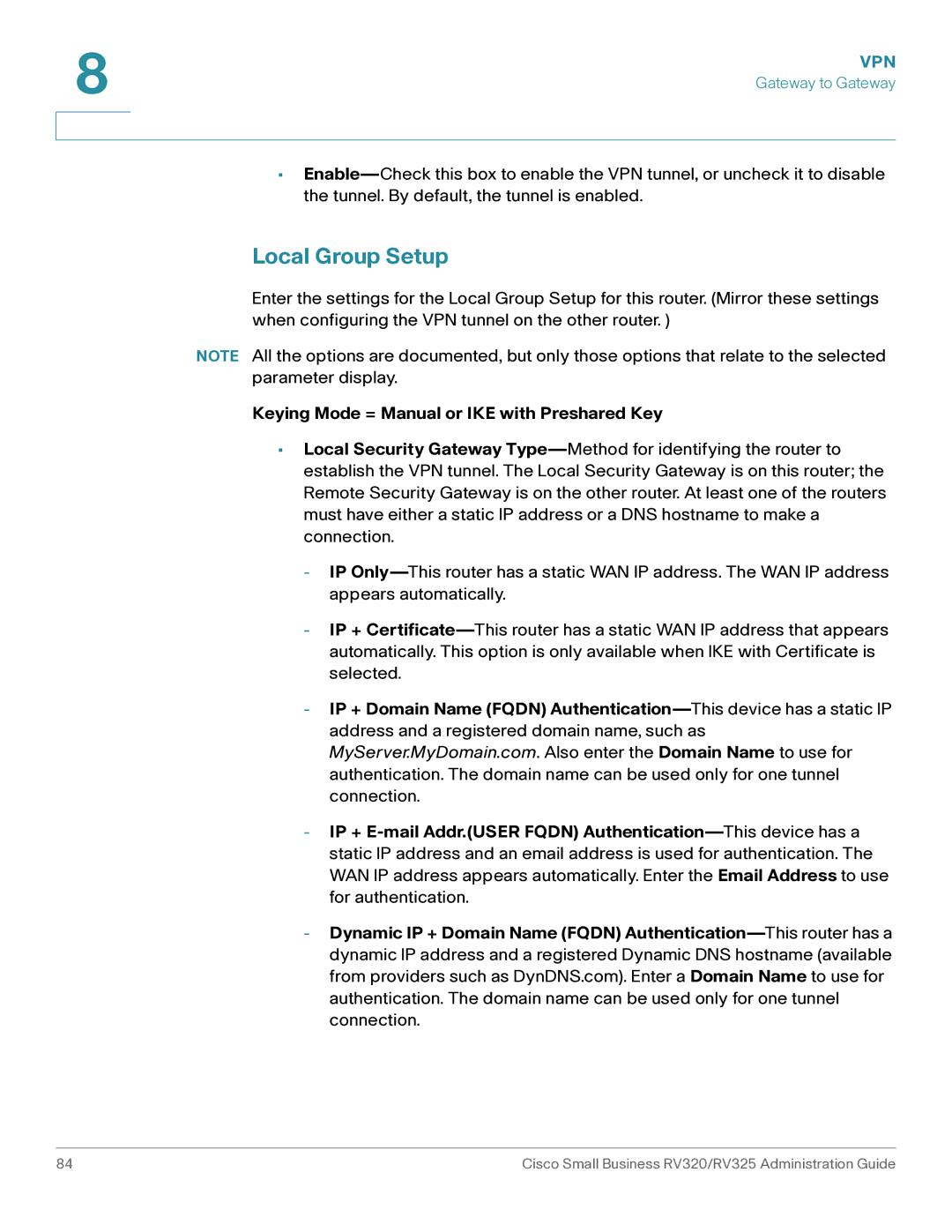
•Enable—Check this box to enable the VPN tunnel, or uncheck it to disable the tunnel. By default, the tunnel is enabled.
Local Group Setup
Enter the settings for the Local Group Setup for this router. (Mirror these settings when configuring the VPN tunnel on the other router. )
NOTE All the options are documented, but only those options that relate to the selected parameter display.
Keying Mode = Manual or IKE with Preshared Key
•Local Security Gateway Type—Method for identifying the router to establish the VPN tunnel. The Local Security Gateway is on this router; the Remote Security Gateway is on the other router. At least one of the routers must have either a static IP address or a DNS hostname to make a connection.
-IP Only—This router has a static WAN IP address. The WAN IP address appears automatically.
-IP + Certificate—This router has a static WAN IP address that appears automatically. This option is only available when IKE with Certificate is selected.
-IP + Domain Name (FQDN) Authentication—This device has a static IP address and a registered domain name, such as MyServer.MyDomain.com. Also enter the Domain Name to use for authentication. The domain name can be used only for one tunnel connection.
-IP + E-mail Addr.(USER FQDN) Authentication—This device has a static IP address and an email address is used for authentication. The WAN IP address appears automatically. Enter the Email Address to use for authentication.
-Dynamic IP + Domain Name (FQDN) Authentication—This router has a dynamic IP address and a registered Dynamic DNS hostname (available from providers such as DynDNS.com). Enter a Domain Name to use for authentication. The domain name can be used only for one tunnel connection.
84 | Cisco Small Business RV320/RV325 Administration Guide |
